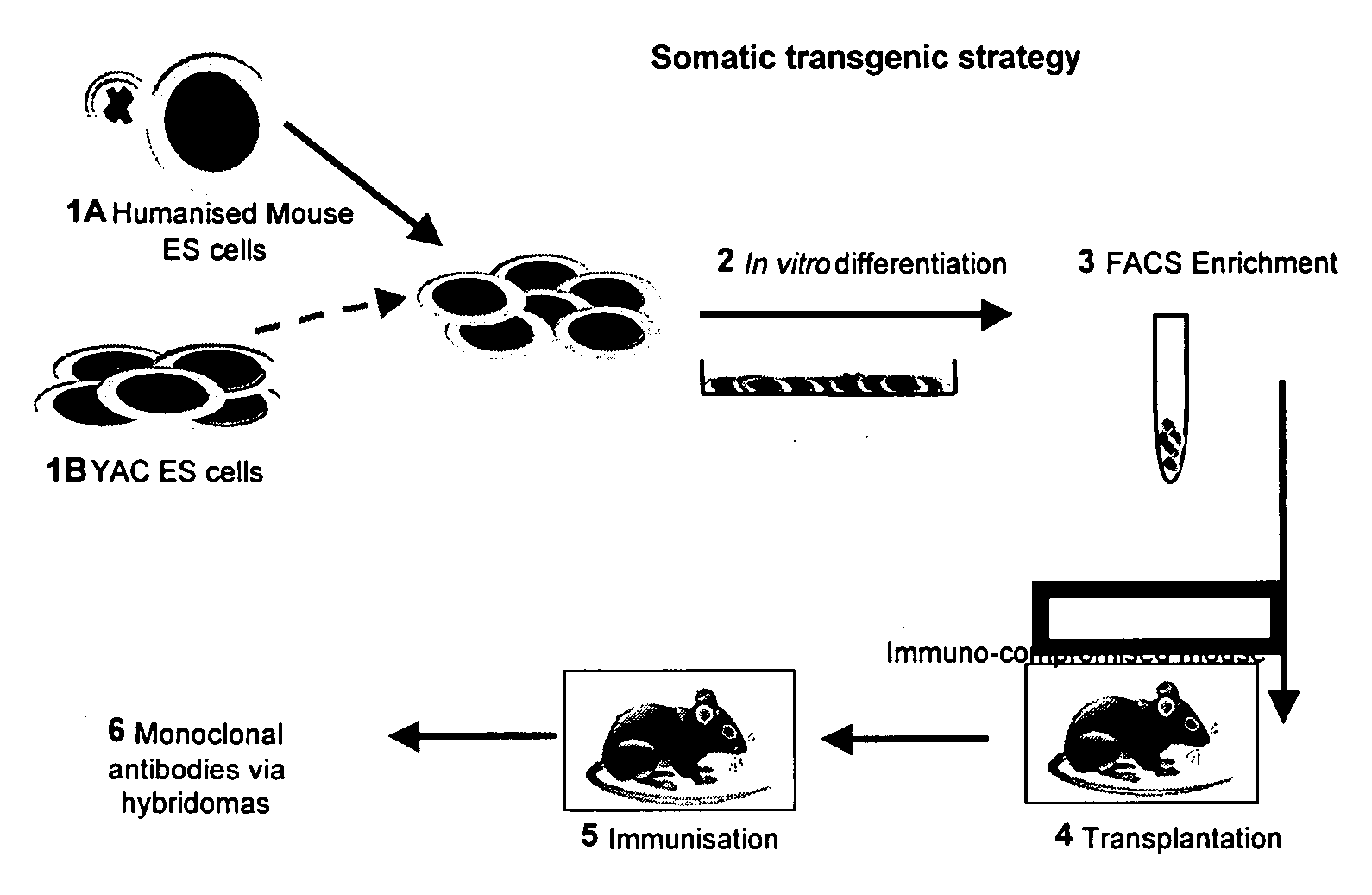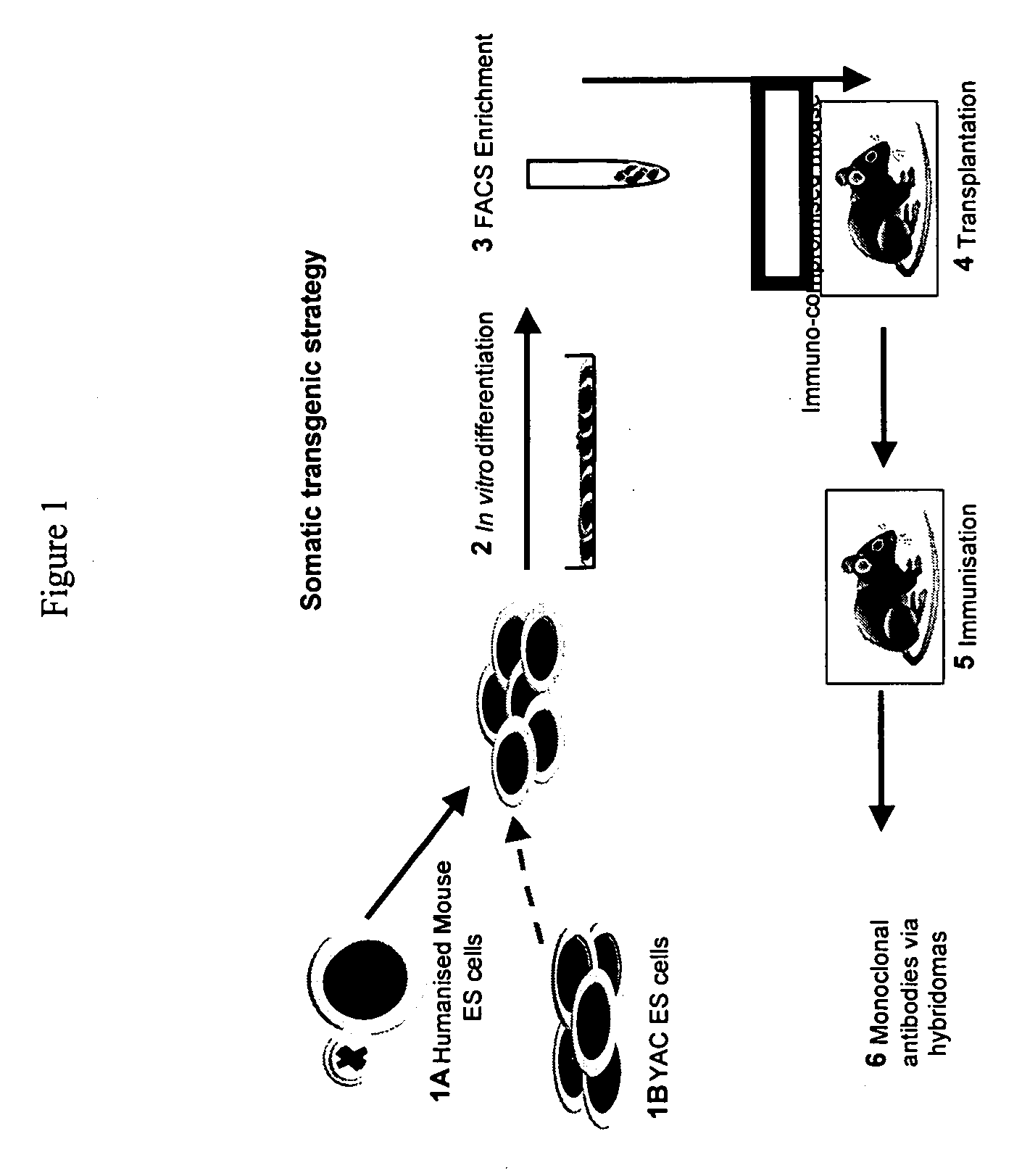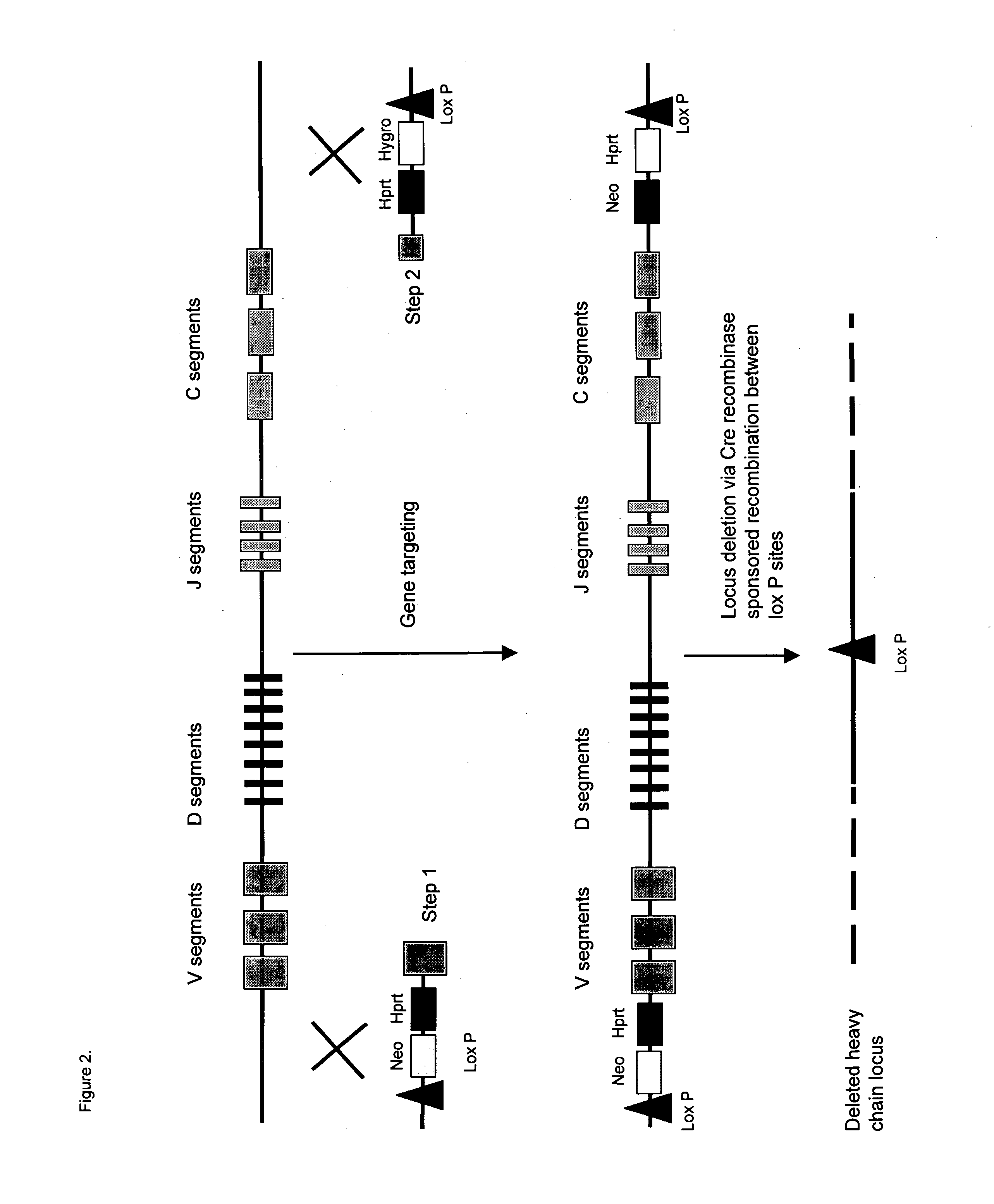Methods and compositions for the generation of antibodies
a monoclonal antibody and composition technology, applied in the field of new monoclonal antibody generation methods, can solve the problems of patient allergic reaction, high cost and time consumption of humanisation process, and most approaches to developing products as products have been met with a number of commercial and technical limitations, so as to improve the differentiation of donor cells
- Summary
- Abstract
- Description
- Claims
- Application Information
AI Technical Summary
Benefits of technology
Problems solved by technology
Method used
Image
Examples
example 1
Methods for the Production of Embryonic Stem (ES) Cells Carrying the Human Immunoglobulin Genes.
[0179] Transfer of human chromosomes or fragments thereof into mouse embryonic stem cells was mediated by PEG sponsored micro-cell fusion. Micro-cells were prepared from human chromosome donor cells. These donor cells include primary human fibroblasts, telomerase immortalised human cells, SV40 transformed human cells, mouse ES cells, mouse 3T3 cells and mouse A9 cells containing the relevant human chromosome, (2, 14 or 22).
[0180] Mouse embryonic stem cells were grown in ES medium: Glasgow's Minimum Essential Medium (GMEM; Sigma) supplemented with 5% newborn calf serum and 10% fetal calf serum (Globepharm), 0.1 mM non-essential amino acids (Life technologies), 0.1 mM β-mercaptoethanol, 1 mM sodium pyruvate (Life technologies), 2 mM L-glutamine (Life technologies) and 1000 U / ml recombinant murine leukaemia inhibitory factor (LIF; Life technologies). The donor cells were grown in GMEM or ...
example 2
Detection of Human Chromosomes 22, 14 and 2 or Fragments Thereof in ES Cells
[0186] Detection of human chromosome or fragments thereof in ES cell lines was initially performed by PCR analysis using human specific PCR primers. PCR positive lines were then verified.
[0187] Detection of chromosomes (2, 14 and 22) and fragments of, were initially detected using PCR for DNA markers specific for the respective chromosomes. Genomic DNA was prepared from the ES hybrid lines by the following method a method similar to the ‘Nucleon I’ DNA extraction kit method of Scotlab. Briefly, the ES cell clones were expanded in a 24 well plate. Cells were then trypsinised with 100 μl Trypsin solution for 3 minutes then media was added to stop reaction and the cells were pelleted at 2000 rpm. for 5 min. The cell pellets were re-suspended by gentle vortexing in 340 μl of reagent B (400 mM Tris-HCl pH to 8.0 using 2 M NaOH. 60 mM EDTA. 150 mM NaCl. 1% SDS). 2 μl of 10 mg / ml RNase A was added and incubated ...
example 3
Methods for the Construction of Mouse ES Cells with Deleted Ig Loci.
Construction of Targeting Vectors for Inactivating the Ig Heavy Locus
[0193] The inactivation required 2 targeting vectors to be built. The targeting strategy along with the relative order of the 2 cassettes are presented in FIG. 2. The first construct integrated at the 5′ end of the first variable gene segment. The vector consisted of 6 to 10 kb of homology to the intronic sequence 5′ of the first variable gene sequence together with the first variable gene sequence. The required genomic DNA fragments for both targeting constructs were isolated by long range PCR from mouse 129sv genomic DNA according to the manufacturers instructions of the EXPAND PCR system (Boehringer Mannheim). The PCR derived fragments were cloned into the pGemT-Easy vector system (Promega). The selectable markers neomycin and a HPRT mini-gene are included along with a loxP site within the mouse sequence of the targeting vector. The flanking...
PUM
 Login to View More
Login to View More Abstract
Description
Claims
Application Information
 Login to View More
Login to View More - R&D
- Intellectual Property
- Life Sciences
- Materials
- Tech Scout
- Unparalleled Data Quality
- Higher Quality Content
- 60% Fewer Hallucinations
Browse by: Latest US Patents, China's latest patents, Technical Efficacy Thesaurus, Application Domain, Technology Topic, Popular Technical Reports.
© 2025 PatSnap. All rights reserved.Legal|Privacy policy|Modern Slavery Act Transparency Statement|Sitemap|About US| Contact US: help@patsnap.com



